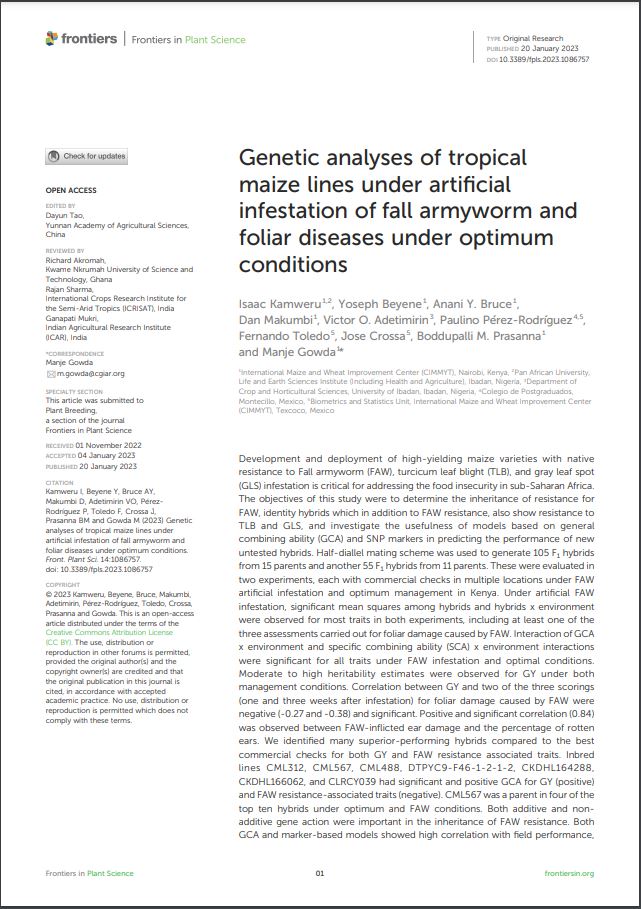Development and deployment of high-yielding maize varieties with native resistance to Fall armyworm (FAW), turcicum leaf blight (TLB), and gray leaf spot (GLS) infestation is critical for addressing the food insecurity in sub-Saharan Africa. The objectives of this study were to determine the inheritance of resistance for FAW, identity hybrids which in addition to FAW resistance, also show resistance to TLB and GLS, and investigate the usefulness of models based on general combining ability (GCA) and SNP markers in predicting the performance of new untested hybrids. Half-diallel mating scheme was used to generate 105 F1 hybrids from 15 parents and another 55 F1 hybrids from 11 parents. These were evaluated in two experiments, each with commercial checks in multiple locations under FAW artificial infestation and optimum management in Kenya. Under artificial FAW infestation, significant mean squares among hybrids and hybrids x environment were observed for most traits in both experiments, including at least one of the three assessments carried out for foliar damage caused by FAW. Interaction of GCA x environment and specific combining ability (SCA) x environment interactions were significant for all traits under FAW infestation and optimal conditions. Moderate to high heritability estimates were observed for GY under both management conditions. Correlation between GY and two of the three scorings (one and three weeks after infestation) for foliar damage caused by FAW were negative (-0.27 and -0.38) and significant. Positive and significant correlation (0.84) was observed between FAW-inflicted ear damage and the percentage of rotten ears. We identified many superior-performing hybrids compared to the best commercial checks for both GY and FAW resistance associated traits. Inbred lines CML312, CML567, CML488, DTPYC9-F46-1-2-1-2, CKDHL164288, CKDHL166062, and CLRCY039 had significant and positive GCA for GY (positive) and FAW resistance-associated traits (negative). CML567 was a parent in four of the top ten hybrids under optimum and FAW conditions. Both additive and non-additive gene action were important in the inheritance of FAW resistance. Both GCA and marker-based models showed high correlation with field performance, but marker-based models exhibited considerably higher correlation. The best performing hybrids identified in this study could be used as potential single cross testers in the development of three-way FAW resistance hybrids. Overall, our results provide insights that help breeders to design effective breeding strategies to develop FAW resistant hybrids that are high yielding under FAW and optimum conditions.

